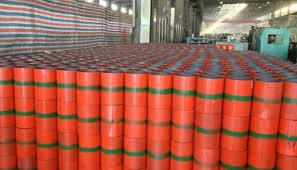Understanding Well Tubing and Casing in Oil and Gas Production Systems
The Importance of Well Tubing and Casing in Oil and Gas Operations
In the oil and gas industry, the terminology of well tubing and casing plays a vital role in ensuring the efficient extraction and management of hydrocarbon resources. Both tubing and casing are crucial components that facilitate the safe and effective operation of wells, while also protecting them from various environmental hazards.
Understanding Well Casing
Well casing refers to the series of pipes or tubes that are installed in a borehole to provide structural integrity to the well. The primary purpose of casing is to stabilize the wellbore and prevent it from collapsing. It is also instrumental in isolating the reservoir from other underground formations. Proper casing ensures that the hydrocarbons can be efficiently extracted without being contaminated by surrounding geological formations.
Casing comes in different sizes and grades, tailored to the specific needs of a well. The outermost layer is typically referred to as surface casing, which is cemented into place to create a watertight seal. This seal protects freshwater zones from contamination and prevents the migration of fluids within the subsurface. As drilling progresses deeper, additional casing strings are installed, including intermediate and production casing, each designed to withstand different pressure and environmental conditions.
The Role of Well Tubing
Well tubing, often referred to simply as tubing, is the pipe that runs through the wellbore and carries hydrocarbons from the production zone to the surface. Unlike casing, which is fixed in place, tubing is a more dynamic component that can be removed and replaced as necessary. It is typically made from higher-grade steel to withstand the corrosive nature of produced fluids and the high pressures found in deep wells.
well tubing and casing

The design of the tubing must account for various factors, including the temperature and pressure of the fluids being produced, as well as any potential corrosive materials such as hydrogen sulfide (H2S) or carbon dioxide (CO2). Additionally, the diameter of the tubing must be selected carefully to optimize flow rates and minimize pressure losses during production.
The Interaction Between Tubing and Casing
The relationship between tubing and casing is fundamental to the safe and productive operation of a well. While casing provides the structural backbone and safety barrier of a well, tubing is integral to the efficiency of hydrocarbon extraction. In many cases, the success of drilling operations hinges on the proper installation and maintenance of both components.
One of the critical challenges faced during drilling operations is managing pressure changes within the wellbore. Casing must bear the weight of the drilling mud and other tools, while tubing must be designed to handle fluctuating pressures during production. Engineers must carefully consider the interaction between these two components when designing a well to ensure long-term performance and safety.
Conclusion
In conclusion, well tubing and casing are indispensable elements of the oil and gas industry. They serve distinct but complementary functions that are critical to the success of drilling operations. Casing provides a protective structure that maintains the integrity of the borehole, while tubing facilitates the flow of hydrocarbons to the surface. The successful interaction between these two components not only optimizes production rates but also ensures adherence to safety and environmental regulations.
As technology continues to advance, the materials and engineering practices employed in the design and installation of tubing and casing are also evolving. Enhanced materials resistant to corrosion and improved installation techniques are being developed to further increase the reliability and efficiency of wells. By emphasizing the importance of well tubing and casing, the oil and gas industry can continue to improve operational safety and productivity, ultimately ensuring a more sustainable approach to energy extraction.
-
Tubing Crossover - API Compatible, Custom Sizes, In StockNewsNov.10,2025
-
Tubing Coupling | High-Strength, Leak-Proof Steel CouplingsNewsNov.10,2025
-
Wholesale API Threading Casing Coupling | API 5CT, Fast ShipNewsNov.10,2025
-
Pup Joint Supplier | API Certified, Custom, Quick ShipNewsNov.10,2025
-
Pup Joint Manufacturers | Precision Machined, Fast DeliveryNewsNov.10,2025
-
Tubing Coupling | Precision Steel, Leak-Proof, Fast DeliveryNewsNov.03,2025







